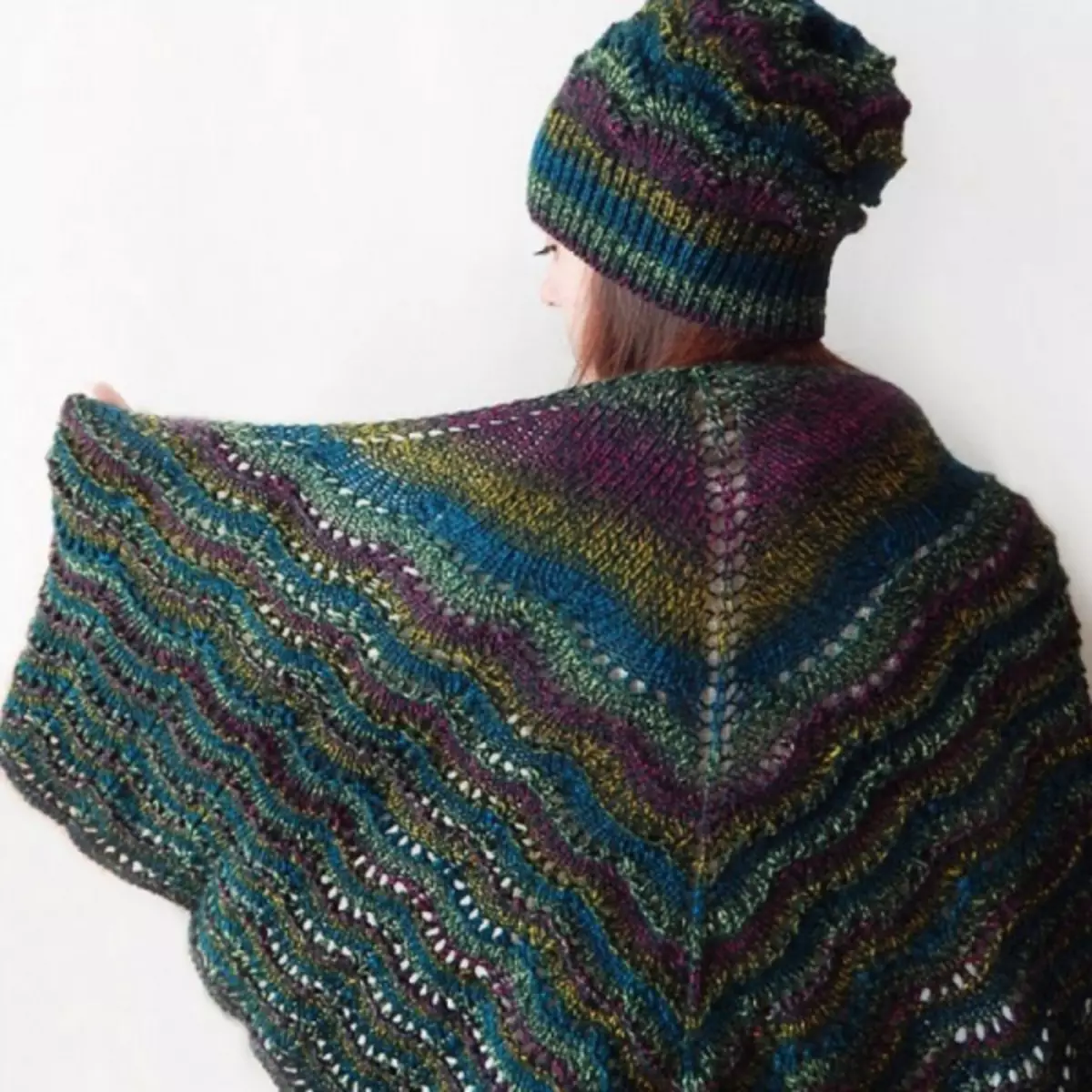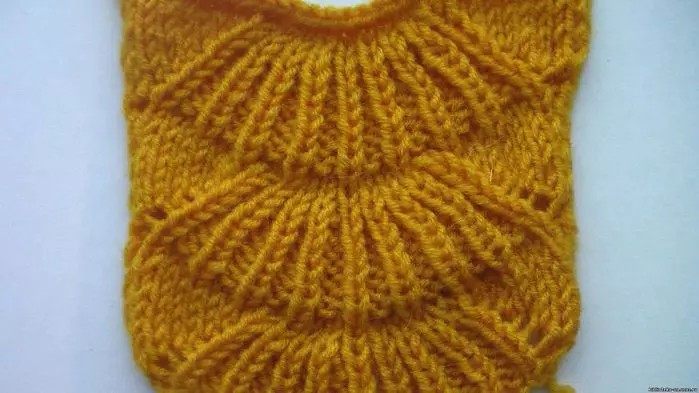The "peacock tail" has long established itself as one of the classic knitting patterns: this drawing is often used to decorate women's and children's things. There are several complex fantasy patterns of the pattern, but the classic "peacock tail" is available to novice authors - it is formed only from nakidov, invalous and facial, as well as two hinges associated with the invalid. When using thick threads, the pattern is obtained dense and relief, when choosing thin - light and openwork, it is also necessary to remember when knitting a "peacock tail" pattern with knitting needles. The scheme describing the process is presented below.
Visually, the pattern resembles a simple wave, a full "peacock tail" is formed only after repeating rapport. It also needs to be taken into account when knitting and calculating loops in the event that this pattern is planned to decorate only the edges of the product or its small part.

As a rule, when knitting a "peacock tail" uses two options for rapport - it can be repeated in direct or in a checker order. In the first case, the elements of the pattern will form long vertical stripes along the entire length of the product, in the second - they will be alternate, and their length depends on the decision of the author, there are no restrictions on this issue.
Simple option
Rapport of the simplest peacock tail - 13 loops and four rows. In the first row, you need to connect two hinges together twice. After that, the facial and nakid alternately alternate. Next, they knit another facial loop, twice there are two facial together. The second and fourth rod knitted with hinges, the third - facial. Rapport completed.
At the request of the author, the number of loops can be proportionally increased, as proposed in the diagram.
The final is obtained vertical peacocks tails connected to each other smooth canvas with horizontal embossed stripes. The maximum similarity of this pattern with a peel from a peacock tail will be noticeable when knitting skirts, fitted models of dresses or hats, tiping to the top.
Article on the topic: Pearl pattern with knitting knitting for stern with description and video
In addition, it is possible to achieve the same effect using threads of different colors. So, with contrasting color, you can highlight the strip associated with facial loops and nakida, then the "tail" will rise from the bottom up. If the bright color of the loop associated with the facial, the pattern will be expanded to the bottom.

In the event that all the web and the "tailings" are connected with this pattern, the vertical gradient of the entire product will be well associated with a successful color solution. However, if the rows of different colors are alternate on the canvas, it can visually distract attention from the drawing and make it less noticeable - the impression will be created that the work is made by simple waves.
Chess
For registration of parts of the product or children's items, the location of the "peacock tail" will be a good option in a chess order. If the height of the required canvase allows, two rapports can be associated, that is, eight rows, as with conventional knitting. In the next eight rows, the drawing should be dismissed so that in the end the canvas was decorated with small, but noticeable "peacock tails." The knitting scheme is preserved, but in one exception: in the first row of a new, displaced rapport, knitting begins not from the first, but from the seventh loop.

The row appears as follows: the facial and nakid alternate twice, then they knit another facial, four times - two together face, and then another facial, nakid and facial. Rapport is completed by Nakud. In order for the product to look symmetrical, it is worth repeating the displaced and ordinary options for a rapport equal to the number of times.
Proper combination
Due to its ease and opening in the knitting of thin threads, the "peacock tail" is well combined not only with a simple stingy or handful pattern, but also with traditionally "female" drawings, such as fantasy braids, as well as various asterisks, "pearls" and other .
Article on the topic: how to make an iron helmet of cardboard
When using thick yarn, it is necessary to remember that more volumetric patterns, for example, "hedgehogs" or "sideways", will attract more attention, so it is not worth combining for the design of one canvase with a "peacock tail" because it will stop being a central element Product design.

Also, this pattern is not recommended to be used to decorate products on which geometric elements are planned, like strict Aran or Chess. The exceptions are soft zigzags that may supplement the peacock tail if necessary, add a big amount or zoning its parts.
In the matter of combinations of this drawing with rubber bands, it is necessary to remember that when designing the edge of the product with a "peacock tail", it turns out to be wavy, therefore an elastic-attached gum may look inactive and asymmetric. In addition, if the product that is fully decorated with a "peacock tail" should sit freely, but complemented by a dense elastic band, it distorts the pattern that in the original should create the impression of divergent down the feathers.
Video on the topic
You can get acquainted with the technique of knitting the pattern by looking at the video data:
